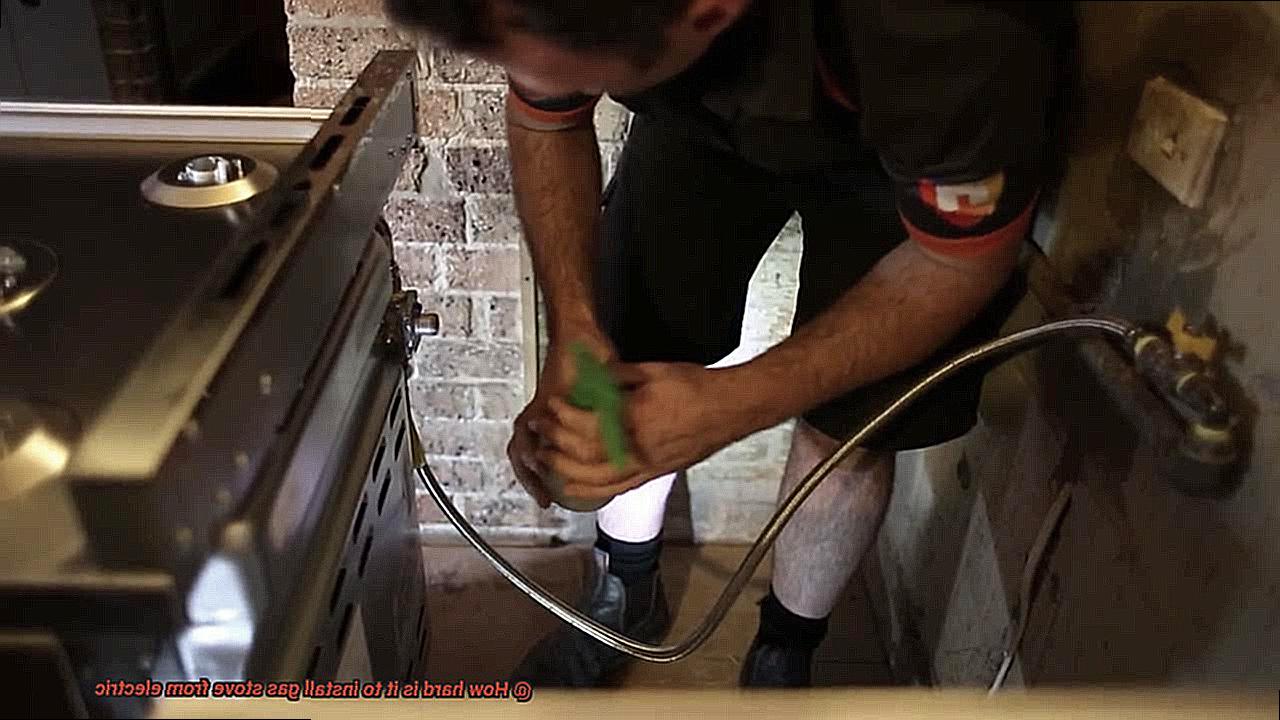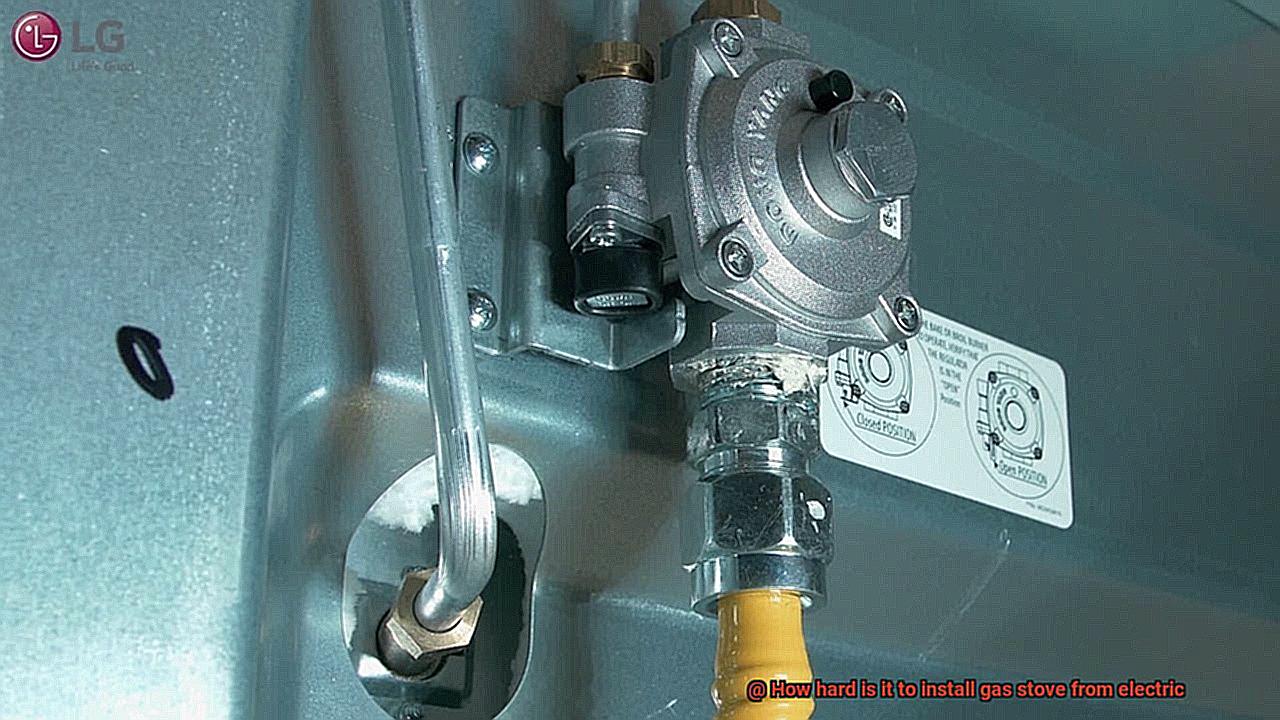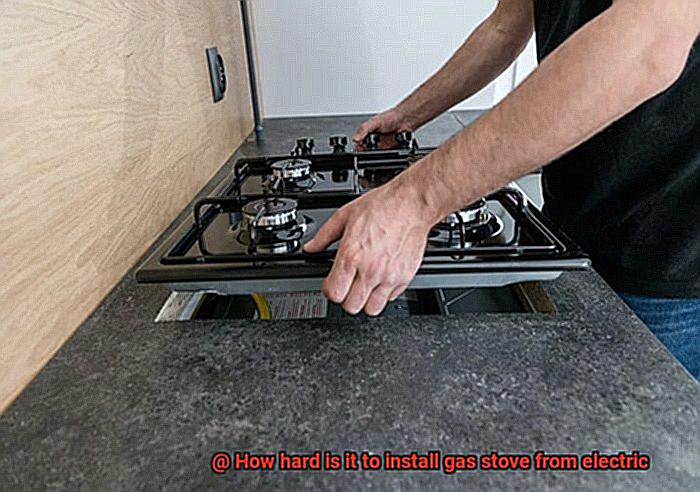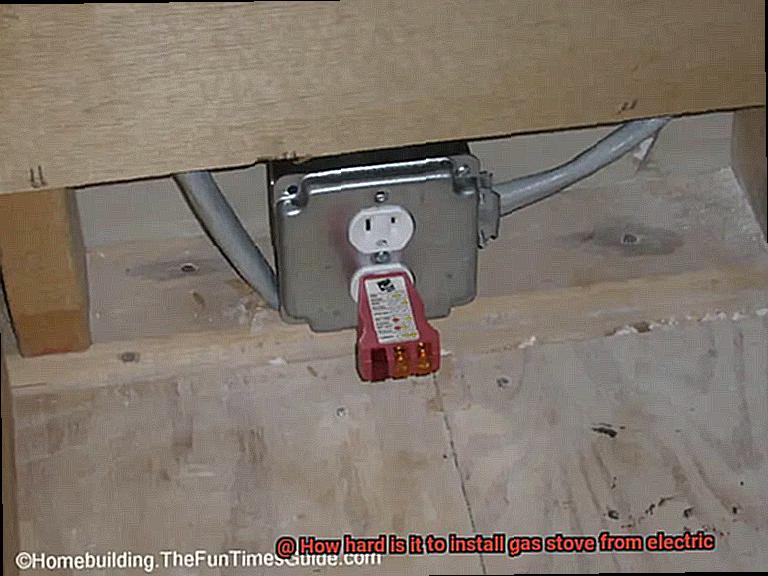Are you tired of cooking on an electric stove and ready to upgrade to a gas one? The thought of installing a gas stove from electric may seem intimidating, but fear not. With the right preparation and guidance, it can be a breeze.
The main difference between the two types of stoves is obvious – one runs on electricity while the other requires access to a gas line. Luckily, many homes already have a gas line installed. However, if your home isn’t equipped with one yet, no need to worry – just hire a professional plumber to install it for you.
In this blog post, we’ll walk you through the installation process step-by-step so that you can confidently switch over to a gas stove. From prepping your kitchen for the installation to connecting your new appliance to the gas line, we’ve got you covered. And in case any issues arise during the process, we’ll provide some helpful tips for troubleshooting.
So say goodbye to your old electric stove and hello to delicious meals cooked on your new gas stove. Let’s get started.
Contents
What Is Involved in Switching From Electric to Gas?
It may seem like a daunting task, but with the right planning and professional help, it can be a straightforward process. Here are some key considerations to keep in mind:
- Natural Gas Availability: The first step is to determine whether natural gas service is available in your area. If not, you will need to have a gas line installed by a licensed professional. While this may be a significant expense, the benefits of cooking with gas may outweigh the cost in the long run.
- Electrical Wiring: Gas stoves require less electricity than electric stoves, but they still need to be plugged into an electrical outlet for ignition and control purposes. If your home’s electrical wiring is not up to code or does not meet the voltage requirements for your new gas stove, you may need to have it upgraded by an electrician.
- Choosing Your Gas Stove: Gas stoves come in different sizes and styles, so it is important to choose one that fits your needs and budget. Consider factors such as burner configuration, oven size, and special features like convection cooking.
- Installation: Once you have selected your new gas stove, it’s time for installation. This involves disconnecting your old electric stove and installing a new gas line. This step should only be attempted by a licensed professional, as improper installation can lead to gas leaks and other safety hazards.
- Safety Considerations: Gas stoves produce carbon monoxide, which can be deadly if not properly ventilated. You will need to ensure that your kitchen has proper ventilation in place, such as an exhaust fan or range hood, to prevent carbon monoxide buildup.
Availability of Natural Gas in Your Area
Don’t fret, we’ve got you covered. Here’s everything you need to know about the availability of natural gas in your neighborhood.
The first step is to contact your local utility company. They can provide vital information about whether natural gas lines are available in your area and guide you on how to connect to them. It’s always best to seek advice from professionals because they know the specific regulations and codes for your region.
However, it’s crucial to remember that even if natural gas is available in your area, it may not be easily accessible in your home. Older homes may not have the necessary infrastructure for a gas stove, meaning additional work is required to install them. In such cases, homeowners need to factor in these potential costs before making their final decision.
Besides the accessibility of natural gas, it’s also essential to consider the cost of installation. While natural gas stoves can be more efficient and cost-effective in the long run, their initial installation costs can be higher than electric stoves. Hence, homeowners should weigh these costs against the potential long-term benefits before deciding which type of stove to install.
Electrical Wiring Requirements
While it’s a great decision, it’s important to consider the electrical wiring requirements before making the switch. As an expert in this field, I’m here to guide you through the process and offer some helpful tips.
Before beginning any installation, you need to determine the voltage and amperage requirements of the appliance. This information can typically be found in the manufacturer’s instructions or on the appliance itself. Failure to do so may lead to improper installation, which could result in safety hazards.

Once you have determined the electrical requirements of your new gas stove, you will need to ensure that your existing electrical wiring can handle the load. The good news is that most gas stoves require less power than electric stoves, so you may not need to upgrade your electrical panel or wiring. However, it’s always best to consult with a professional electrician who can assess your electrical system and determine if any upgrades are necessary.
If your current wiring is outdated or insufficient, hiring an electrician to upgrade your electrical system is necessary. This could involve installing a new circuit breaker or running new wiring to your kitchen. In addition, it’s important to ensure that the wiring is properly grounded to prevent any potential hazards.
In conclusion, while there are certainly some electrical wiring requirements when it comes to installing a gas stove from an electric stove, it’s not usually a difficult task for a professional electrician. By adhering to safety measures and ensuring that the installation is done correctly, you can enjoy your new kitchen upgrade without any risks or hazards.
The Installation Process

Transitioning from an electric stove to a gas stove may seem like a daunting task, but fret not, it’s a manageable process. As an expert in this field, let me guide you through the installation process and provide some helpful tips along the way.
First things first – check if your home has a gas line and ensure it is accessible near your desired stove location. If you don’t have a gas line, no worries. You can have one installed by a licensed professional before proceeding with the installation.
Next, disconnect and remove your existing electric stove. This involves turning off the power supply at the circuit breaker and disconnecting any wiring or cords.

Now, it’s time for the fun part – installing your new gas stove. Begin by attaching the gas line to the stove and securing it with a wrench. Don’t forget to attach the regulator and ensure all connections are properly tightened.
Once everything is attached, plug in your new stove and test it out. It’s crucial to check for any leaks or other issues before using your new stove regularly. Safety first.
Overall, converting from an electric stove to a gas stove is a manageable process that can be accomplished with the right tools and knowledge. And if you’re unsure about any aspect of the installation process, don’t hesitate to consult with a licensed professional.
Safety Considerations
When it comes to switching from an electric stove to a gas one, safety considerations are of utmost importance. As an expert in this field, I cannot stress enough the need to take precautions seriously. Here are some crucial safety aspects to keep in mind:
Firstly, make sure your home has a gas line installed by a licensed professional before starting the installation process. Attempting to install one yourself can result in severe safety hazards and legal consequences.
Another vital consideration is proper ventilation in your kitchen area. Gas stoves can produce carbon monoxide, a lethal gas that can build up in enclosed spaces, so ensure that you have adequate ventilation to prevent any potential hazards.
Before starting the installation process, turn off the gas supply to avoid any gas leaks, which can cause fires and explosions. Be sure to have all necessary tools and equipment on hand and follow the manufacturer’s instructions carefully.
To add an extra layer of safety, install smoke and carbon monoxide detectors in your kitchen area. These devices will alert you of any potential hazards so that you can evacuate your home safely.
Should You Install a Gas Stove Yourself?
While it may be tempting to take on the installation yourself, there are important factors to consider before taking the plunge.
First and foremost, installing a gas stove involves working with gas lines and connections, which can be extremely dangerous if not handled correctly. Gas leaks can lead to catastrophic explosions or fires, causing significant damage and harm. Therefore, it’s highly recommended that you hire a licensed professional to ensure a safe installation.
Furthermore, there are legal requirements for gas stove installation that cannot be ignored. Most areas mandate that a licensed professional must handle gas appliance installations to obtain necessary permits and inspections. Failure to comply with local regulations could result in hefty fines or penalties.
Even if you have experience with DIY projects or electrical work, installing a gas stove requires specialized knowledge and skills beyond the average homeowner’s expertise. Proper ventilation, gas line fittings, and ignition systems must be installed correctly to ensure safe operation. A professional installer will have the tools and knowledge necessary to make sure your gas stove functions properly and meets all safety requirements.
Benefits of Professional Installation
While the DIY approach may seem tempting, the benefits of hiring a professional installer cannot be overstated. As an expert in this field, I have researched and compiled a list of reasons why professional installation should be your top choice.
Firstly, a professional installation can save you time and hassle. Installing a gas stove requires specialized knowledge of gas connections, electrical wiring, and safety procedures. Professional installers have the training and expertise to handle these tasks quickly and efficiently, sparing you the hours of research and potential mistakes that come with a DIY approach.
Safety is also a crucial concern when it comes to gas stove installation. Gas stoves require proper ventilation and placement to prevent fire hazards. Professional installers can identify potential hazards and take steps to prevent them, ensuring that the stove is installed safely and securely. This can give you peace of mind knowing that your home is protected from potential dangers.
Moreover, a professional installation guarantees that your gas stove will function correctly. An improperly installed stove can lead to issues such as gas leaks or carbon monoxide poisoning. A professional installer can test the appliance to make sure it is working correctly, giving homeowners peace of mind and protecting their family’s safety.
In addition, hiring a professional installer means you can benefit from their experience and expertise. They can give you advice on the best type of gas stove for your needs, as well as offer guidance on maintenance and safety procedures.
Conclusion
As we come to the end of this guide, it’s clear that switching from an electric stove to a gas one is not as difficult as it may seem. With proper guidance and preparation, you can make the transition smoothly. The first step is to check if natural gas service is available in your area and ensure that your home has the necessary infrastructure for a gas stove. It’s also crucial to consider the cost of installation and potential long-term benefits before making your final decision.
When it comes to electrical wiring requirements, consulting with a professional electrician is essential. They can assess your electrical system and determine if any upgrades are necessary. Safety should be at the forefront of your mind when installing a gas stove. Proper ventilation, turning off the gas supply, and using necessary tools and equipment are crucial aspects of ensuring safe operation.
Although DIY installation may seem like an option, hiring a licensed professional is highly recommended due to safety hazards and legal requirements. Professional installation guarantees that your gas stove will function correctly, protect your family’s safety, save you time and hassle, offer expert advice on maintenance and safety procedures.
So why not say goodbye to your old electric stove and hello to delicious meals cooked on your new gas stove? With this comprehensive guide in hand, you can confidently make the switch without any risks or hazards.






